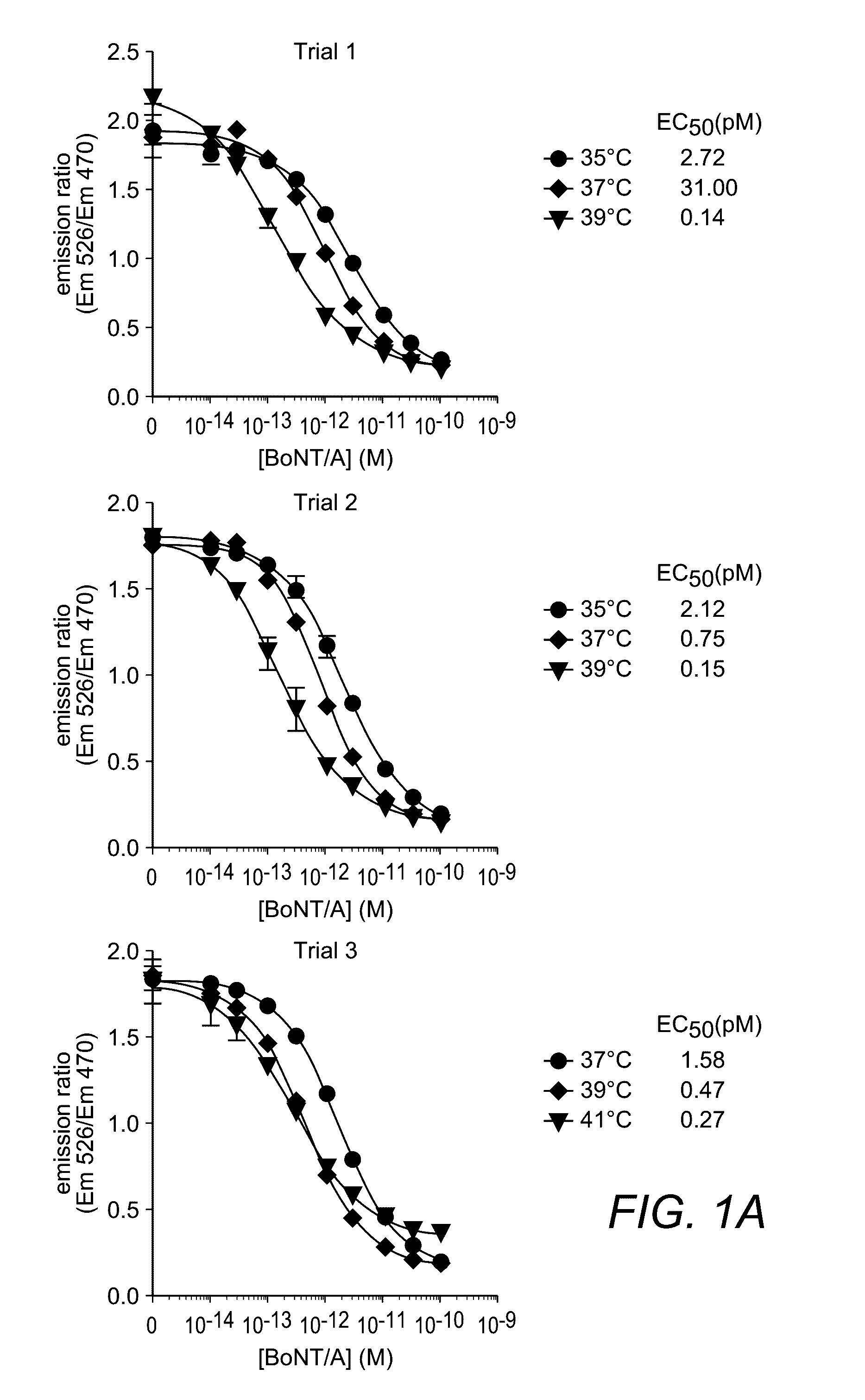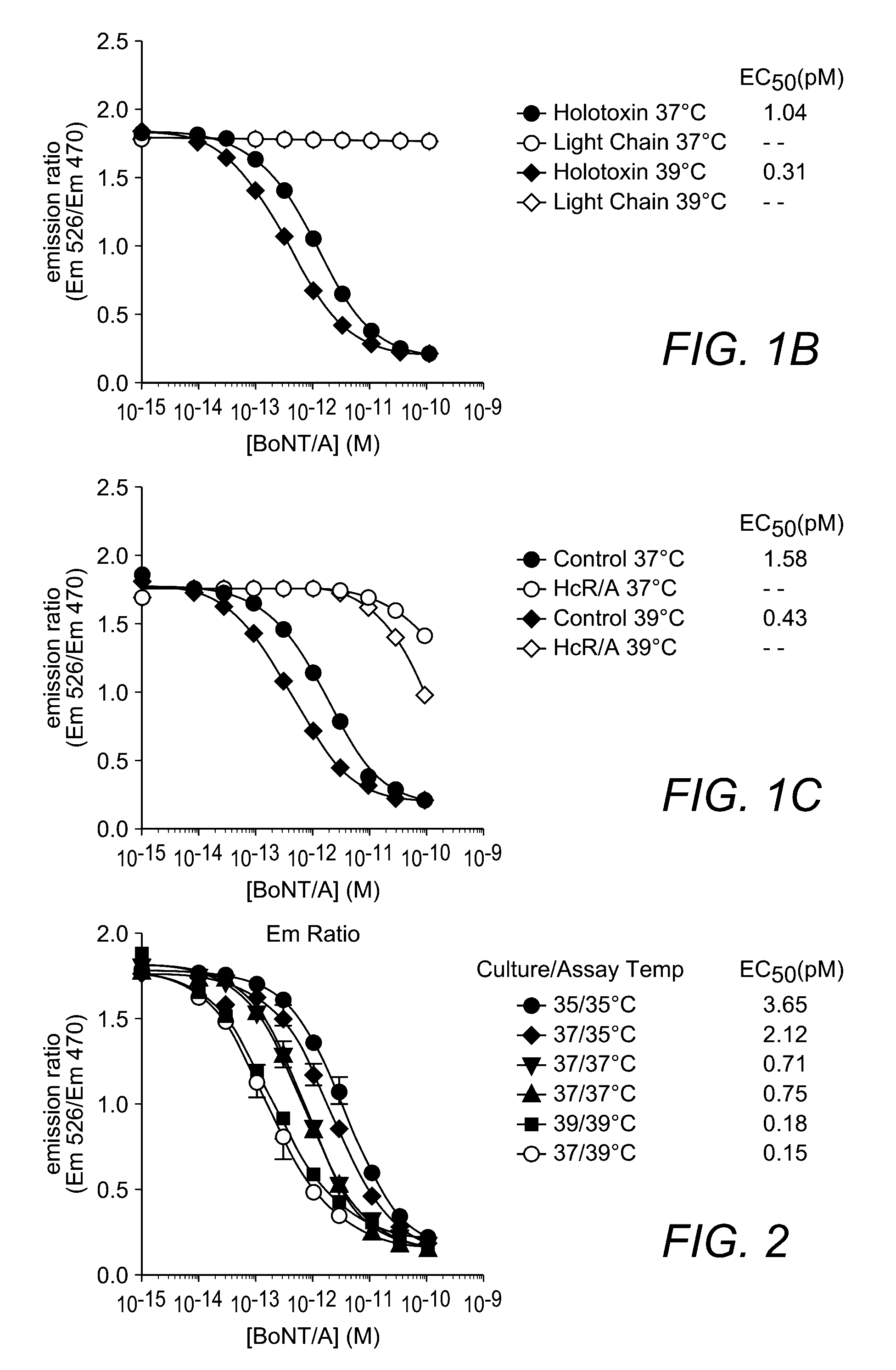Botulinum toxin assay with improved sensitivity
a technology of botulinum toxin and cell assay, which is applied in the field of protease assay, can solve the problems of insufficient sensitivity of cell-based methods, entail considerable expense, and serious harm or even death of victims, and achieve the effects of increasing the sensitivity of cell-based detection
- Summary
- Abstract
- Description
- Claims
- Application Information
AI Technical Summary
Benefits of technology
Problems solved by technology
Method used
Image
Examples
examples
[0057]Temperature Effects.
[0058]Cell based assays to detect botulinum toxin (BOCELL™ assay) were performed at 35.0° C., 37.0° C., and 39.0° C. (Trials 1 and 2), and at 37° C., 39° C., and 41° C. (Trial 3) using botulinum toxin / A holotoxin at concentrations ranging between 10−15 M to 10−9 M. The transfected cells were exposed to one of the three temperatures while being exposed to the botulinum toxin. Dose / response curves were generated by characterizing emission ratios (YFP / CFP) at each concentration and plotting them as a function of botulinum toxin / A concentration. As shown in FIG. 1A, by increasing the temperature used in the assay from 37° C. to 39.0° C. or 41° C. the sensitivity to botulinum toxin (measured as EC50 value) is enhanced more than 5 fold.
[0059]In the studies depicted in FIG. 1B the transfected cells were treated with either botulinum toxin / A holotoxin or botulinum toxin / A light chain and incubated at either 37.0° C. or 39.0° C. Botulinum toxin / A light chain retains...
PUM
| Property | Measurement | Unit |
|---|---|---|
| temperature | aaaaa | aaaaa |
| temperature | aaaaa | aaaaa |
| temperature | aaaaa | aaaaa |
Abstract
Description
Claims
Application Information
 Login to View More
Login to View More - R&D
- Intellectual Property
- Life Sciences
- Materials
- Tech Scout
- Unparalleled Data Quality
- Higher Quality Content
- 60% Fewer Hallucinations
Browse by: Latest US Patents, China's latest patents, Technical Efficacy Thesaurus, Application Domain, Technology Topic, Popular Technical Reports.
© 2025 PatSnap. All rights reserved.Legal|Privacy policy|Modern Slavery Act Transparency Statement|Sitemap|About US| Contact US: help@patsnap.com



